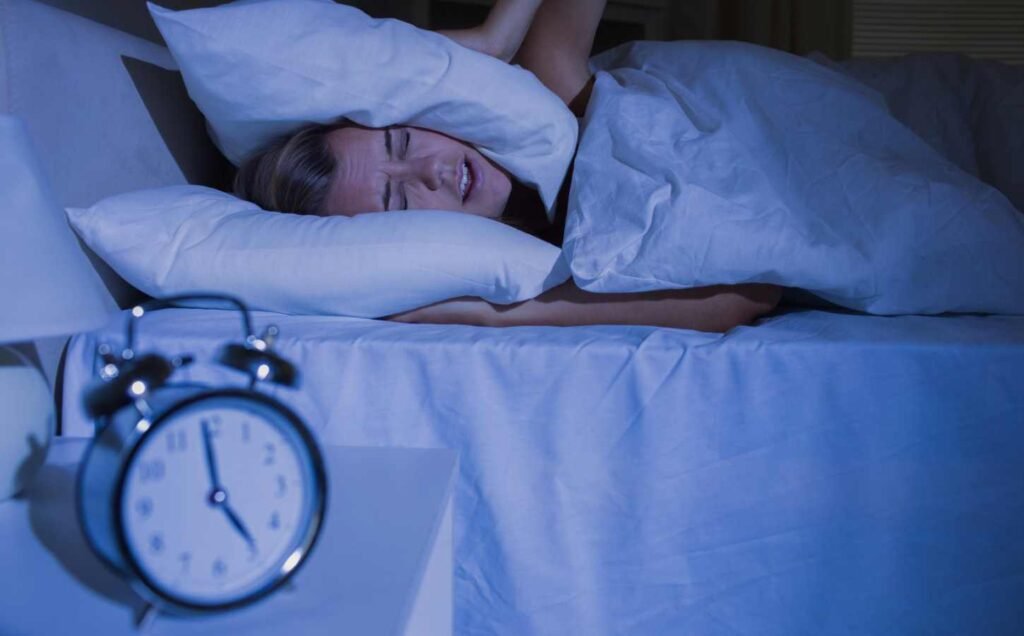Cognitive Behavioral Therapy for Insomnia (CBT-I) is a structured program that helps to address the thoughts and behaviors contributing to their sleep difficulties.
This evidence-based therapy is particularly effective for those suffering from chronic insomnia, providing tools to change negative sleep patterns and improve sleep quality. CBT-I not only helps individuals fall asleep faster but also aids in staying asleep, transforming their overall sleep experience.
Many people struggle with insomnia, turning to medications that may bring temporary relief but often come with unwanted side effects. CBT-I offers a sustainable alternative by targeting the underlying issues associated with insomnia in a holistic way. Therapists guide clients through techniques such as cognitive restructuring and sleep hygiene education, empowering them to regain control over their sleep.
As awareness of sleep’s critical role in overall health grows, approaches like Cognitive Behavioral Therapy for Insomnia are becoming increasingly important. By understanding and implementing these therapeutic strategies, individuals can potentially overcome their insomnia and enhance their well-being. This article will explore the principles, benefits, and methods of CBT-I, offering insights for those seeking a restful night’s sleep.

Understanding Insomnia
Insomnia significantly affects sleep patterns and overall well-being. It encompasses various symptoms and can lead to serious health issues if left unaddressed.
Defining Chronic Insomnia
Chronic Insomnia Disorder is defined by difficulty falling asleep, staying asleep, or waking up too early. According to the DSM-5, it persists at least three times per week for three months or longer. It often arises from various factors, including stress, anxiety, and medical conditions.
This disorder can also be categorized as primary or secondary. Primary insomnia arises without any underlying condition, while secondary insomnia is tied to other issues, such as depression or sleep deprivation.
Insomnia Symptoms and Diagnosis
Symptoms of insomnia vary but typically include:
- Difficulty falling asleep
- Frequent awakenings during the night
- Waking up too early and not being able to return to sleep
- Daytime fatigue or irritability
Diagnosis involves a thorough evaluation, including sleep history, physical examination, and possibly sleep studies. Physicians may also assess for coexisting conditions like anxiety or depression, which can exacerbate insomnia symptoms. A sleep diary may help track patterns and triggers.
Impact of Insomnia on Health
Insomnia can lead to various health problems if untreated. Sleep deprivation increases the risk of chronic conditions, including obesity, diabetes, and cardiovascular disease.
Mental health is also impacted, as insomnia often coexists with anxiety and depression. Individuals may experience impaired cognitive function, reduced productivity, and greater difficulty managing stress.
Additionally, the cyclical nature of insomnia can create a negative feedback loop, making it challenging to establish healthy sleep patterns. Addressing both insomnia and its underlying causes is crucial for improving sleep quality and overall health.
Fundamentals of CBT-I
Cognitive Behavioral Therapy for Insomnia (CBT-I) is a structured program that helps individuals manage insomnia by addressing thoughts and behaviors related to sleep. This section covers the core principles of CBT and its specific application to insomnia, highlighting essential techniques and skills involved.
Principles of Cognitive Behavioral Therapy
Cognitive Behavioral Therapy (CBT) is based on the understanding that thoughts, feelings, and behaviors are interconnected. It focuses on identifying and challenging negative thought patterns that contribute to emotional distress. CBT encourages individuals to develop healthier coping strategies and behavioral changes to improve their mental health.
Key principles include:
- Cognitive Restructuring: Identifying and modifying irrational beliefs.
- Behavioral Activation: Engaging in activities to improve mood and motivation.
- Skill Development: Learning effective problem-solving and coping techniques.
Cognitive Behavioral Therapy for Insomnia (CBT-I)
CBT-I specifically targets the cognitive and behavioral aspects of insomnia. This therapy aims to identify and alter the thoughts and behaviors that disrupt sleep patterns. It emphasizes the importance of a structured sleep schedule and reducing anxiety around sleep.
Key components include:
- Sleep Education: Understanding sleep cycles and the impact of lifestyle choices.
- Sleep Restriction: Limiting time in bed to increase sleep efficiency.
- Stimulus Control: Associating the bed with sleep and intimacy only, avoiding other activities.
CBT-I Techniques Overview
CBT-I encompasses several techniques that are crucial for effective treatment. These techniques help individuals gain control over their sleep environment and develop healthier sleep habits.
Core techniques include:
- Sleep Diary: Tracking sleep patterns to identify issues and progress.
- Relaxation Strategies: Utilizing methods like deep breathing and progressive muscle relaxation.
- Cognitive Techniques: Challenging negative thoughts about sleep and creating positive sleep beliefs.
Each technique requires commitment and effort, as success in CBT-I is largely dependent on active participation and practice.
CBT-I Treatment Components
Cognitive Behavioral Therapy for Insomnia (CBT-I) consists of several key components designed to address the multifaceted nature of sleep issues. Each component plays a crucial role in promoting restful sleep and altering harmful behaviors that contribute to insomnia.
Sleep Hygiene Education
Sleep hygiene education involves teaching individuals about the practices and habits that promote quality sleep. Key elements include maintaining a consistent sleep schedule, creating a comfortable sleep environment, and limiting exposure to screens before bedtime.
A well-lit, cool, and quiet bedroom can enhance sleep quality. It is also essential to avoid caffeine and heavy meals close to bedtime. Teaching the importance of regular exercise, particularly in the morning or afternoon, highlights its positive effects on sleep.
Stimulus Control Instructions
Stimulus control instructions aim to create a strong association between the bed and sleep. Individuals are advised to use the bed only for sleeping and intimacy, avoiding activities such as watching television or working.
If unable to fall asleep within 20 minutes, it is recommended to leave the bedroom and engage in a quiet activity until feeling drowsy. This helps prevent the bed from becoming a source of anxiety, reinforcing the connection between the sleeping space and relaxation.
Sleep Restriction Therapy
Sleep restriction therapy focuses on limiting the time spent in bed to promote more consolidated sleep. This practice initially reduces time allocated for sleep, helping to create a stronger drive for sleep.
Patients track their sleep patterns to identify their average sleep duration. Based on this, they may be advised to stay in bed only for that amount of time, gradually increasing it as sleep efficiency improves. This approach combats excessive time in bed, which often exacerbates insomnia.
Cognitive Restructuring Methods
Cognitive restructuring methods involve identifying and challenging negative thoughts about sleep. Individuals often hold irrational beliefs about sleep that can contribute to anxiety and frustration.
Techniques such as guided imagery and mindfulness practices are used to promote relaxation and shift these negative thought patterns. This process may include questioning the consequences of sleeplessness and reframing thoughts to cultivate a more positive mindset about sleep and rest.
Relaxation Techniques
Relaxation techniques are instrumental in reducing anxiety and stress, which significantly impact sleep. Various methods can be integrated into therapy. Progressive muscle relaxation encourages individuals to tense and then relax different muscle groups, fostering physical relaxation.
Deep breathing exercises can calm the mind and body, promoting a peaceful state before sleep. Other practices like meditation, Tai Chi, and yoga can also provide significant benefits, helping individuals develop coping mechanisms to manage stress and improve overall sleep quality.

Evaluating CBT-I Progress
Assessing progress in Cognitive Behavioral Therapy for Insomnia (CBT-I) involves understanding various metrics related to sleep patterns and therapy effectiveness. Key methods include maintaining sleep diaries, measuring sleep efficiency, and tracking session-by-session progress.
Sleep Diaries and Monitoring
Sleep diaries serve as essential tools for individuals undergoing CBT-I. They typically record sleep onset, wake times, and total sleep duration. By writing down this information daily, individuals can identify patterns or triggers affecting their sleep.
Monitoring these entries helps pinpoint progress over time. For example, noting improvements in sleep latency or reductions in nightly awakenings can indicate therapy effectiveness. Regular review of sleep diaries with a therapist allows for fine-tuning of strategies tailored to the individual’s specific sleep issues.
Measuring Sleep Efficiency
Sleep efficiency, calculated by dividing total sleep time by the time spent in bed, is a crucial measure in evaluating CBT-I progress. A higher percentage indicates better use of time in bed, reflecting effective sleep patterns.
For example, an efficiency of 85% or higher is often considered normal. Tracking this over sessions can reveal meaningful improvements. Adjustments to therapy techniques can be made if efficiency remains low, ensuring focused interventions address underlying cognitive patterns contributing to insomnia.
Session-by-Session Progress
Regular assessment during each CBT-I session helps track individual response to treatment. Therapists can review sleep diaries and sleep efficiency metrics alongside cognitive strategies employed in sessions.
Identifying specific techniques that yield better results encourages continued engagement with therapy. The client can also express their experience, allowing for adjustments to the therapeutic approach. This feedback loop is vital, as it ensures that each individual’s treatment is responsive to their ongoing experience with insomnia.
Special Considerations in CBT-I
Cognitive Behavioral Therapy for Insomnia (CBT-I) has unique considerations that may affect different demographic groups and comorbid conditions. Understanding these factors is crucial for effective treatment.
Adolescents and CBT-I
In adolescents, sleep disturbances are often linked to developmental changes and lifestyle factors, such as increased screen time and academic pressures. CBT-I can be tailored to address these specific challenges.
Interventions may include educating young people about sleep hygiene and establishing a consistent sleep schedule. Involving parents in the therapy process can also enhance compliance and reinforce healthy sleep habits.
Early intervention can reduce the risk of long-term sleep issues, benefiting adolescents’ academic performance and emotional health.
Impact of Medication on CBT-I
Sleep medications can significantly influence the effectiveness of CBT-I. While some medications may offer immediate relief from insomnia symptoms, they do not address underlying cognitive and behavioral factors contributing to sleep problems.
Discontinuing sleep medications may be necessary before starting CBT-I. This approach allows individuals to engage fully in therapeutic practices. It’s important to monitor withdrawal symptoms carefully, as they can exacerbate anxiety or depression.
A collaborative approach with healthcare providers can ensure safer transitions from medication to therapy.
CBT-I and Coexisting Conditions
CBT-I is particularly relevant for individuals with coexisting conditions like depression and anxiety. These conditions often exacerbate sleep disturbances and complicate treatment.
Tailoring CBT-I to include cognitive interventions that address negative thinking patterns can be beneficial. Additionally, anxiety management techniques can help reduce pre-sleep arousal that contributes to insomnia.
It’s essential to coordinate efforts with mental health providers to ensure comprehensive care. Effective management of these coexisting conditions can lead to improved sleep outcomes, enhancing overall well-being.
Research and Evidence Base
Cognitive behavioral therapy for insomnia (CBT-I) has garnered substantial research support, establishing itself as an effective intervention. Key studies, systematic reviews, and clinical guidelines highlight its efficacy.
Systematic Reviews and Meta-Analyses
Numerous systematic reviews have evaluated the effectiveness of CBT-I. A notable review published in the Annals of Internal Medicine concluded that CBT-I significantly improves sleep outcomes compared to placebo and some pharmacological treatments.
Meta-analyses, such as those endorsed by the American Academy of Sleep Medicine, have consistently shown CBT-I to be more effective than sleep medication in the long term. These analyses indicate that CBT-I not only increases total sleep time but also reduces sleep onset latency.
Clinical Guidelines and Recommendations
The American College of Physicians recommends CBT-I as the first-line treatment for chronic insomnia. Their clinical guidelines emphasize that CBT-I should be preferred over pharmacological interventions due to its sustainability and minimal side effects.
The American Academy of Sleep Medicine also supports these findings, highlighting that CBT-I can be administered in various formats, including individual, group, and online sessions. Such flexibility enhances access to therapy for diverse populations.
Studies on Long-term Efficacy
Research reveals that the benefits of CBT-I extend well beyond the treatment period. Studies show that individuals who undergo CBT-I maintain improved sleep quality and a reduction in insomnia symptoms months after completing therapy.
Follow-up assessments indicate that this long-lasting efficacy sets CBT-I apart from medication, which often leads to symptom recurrence. Long-term studies consistently demonstrate that CBT-I’s skill-building approach provides patients with tools to manage insomnia effectively over time.
Technological Advancements
Recent developments in technology have significantly enhanced the accessibility and effectiveness of Cognitive Behavioral Therapy for Insomnia (CBT-I). Innovations in digital platforms and biofeedback methods are providing individuals with more tools to manage their sleep issues.
Digital CBT-I Platforms
Digital CBT-I platforms have emerged as effective alternatives to traditional therapy. These online programs offer structured interventions, allowing users to engage with CBT-I techniques at their own pace.
Key features of these platforms include:
- Interactive modules: Users learn core CBT-I principles, such as sleep restriction and stimulus control.
- Progress tracking: Participants can monitor their sleep patterns and receive feedback.
- Accessibility: Many apps are available on smartphones and tablets, reaching diverse populations.
Research indicates that digital CBT-I can yield similar outcomes to face-to-face therapy, making it a viable option for those unable to access traditional methods.
Biofeedback and CBT-I
Biofeedback techniques have integrated seamlessly with CBT-I to provide real-time data on physiological responses related to sleep. This method helps individuals understand the connection between their thoughts, emotions, and bodily functions.
Key elements of biofeedback in this context include:
- Heart rate variability monitoring: Users learn to regulate their heart rate through relaxation techniques.
- Sleep environment adjustments: Feedback on environmental factors can guide users to optimize their sleep settings.
Combining biofeedback with CBT-I enhances self-awareness, potentially leading to improved sleep quality and reduced insomnia symptoms. The approach empowers individuals by providing them with tangible data to influence their sleep health.
Finding a CBT-I Specialist
Finding a qualified Cognitive Behavioral Therapy for Insomnia (CBT-I) specialist is critical for effective treatment. It is important to consider their qualifications and choose a practitioner that meets specific needs.
Qualifications and Certifications
When searching for a CBT-I specialist, examining their qualifications is essential. Look for practitioners who hold credentials from reputable organizations such as the American Board of Sleep Medicine. This certification indicates specialized training in sleep medicine and cognitive behavioral therapy.
Additionally, it is beneficial if the practitioner has specific training in CBT-I. Some therapists may list this on their profiles or résumés. Verifying their education, years of experience, and ongoing professional development can provide further assurance of their expertise.
Choosing the Right Practitioner
Selecting the right CBT-I practitioner involves considering both professional qualifications and personal rapport. A provider affiliated with prominent institutions like the Mayo Clinic may indicate a higher standard of care.
It’s also important to assess their treatment approach. Some practitioners may offer a combination of in-person and online sessions, allowing for flexibility. Scheduling an initial consultation can help determine if their style and methods align with the individual’s expectations and comfort level.
Considering factors such as availability, communication style, and follow-up practices will enhance the overall experience. Finding the right fit is crucial to fostering a trusting therapeutic relationship.
Frequently Asked Questions
Cognitive Behavioral Therapy for Insomnia (CBT-I) is a structured program that aims to help individuals improve their sleep through various techniques. Several questions frequently arise regarding its effectiveness, components, and available resources.
How long does it typically take to see improvements in sleep when using cognitive behavioral therapy for insomnia?
Improvements in sleep can often be observed within a few weeks of starting CBT-I. Many individuals report better sleep quality after approximately 4 to 6 sessions. Full benefits commonly emerge after completing the entire course of therapy, which can take around 6 to 8 weeks.
What are the main components included in cognitive behavioral therapy for treating insomnia?
CBT-I typically includes several key components such as sleep restriction, stimulus control, cognitive restructuring, and education about sleep hygiene. Each component addresses specific aspects of sleep behavior and thought patterns. This multi-faceted approach helps create sustainable changes in sleeping habits.
What is the evidence supporting the effectiveness of cognitive behavioral therapy for insomnia?
Numerous studies demonstrate that CBT-I significantly reduces insomnia symptoms. Research indicates that it is as effective as medication for improving sleep. Long-term benefits are often noted, with many participants maintaining their improved sleep patterns even after therapy ends.
Are there any online resources or tools for cognitive behavioral therapy that can help with insomnia?
Several online programs and apps offer CBT-I resources. These include guided sleep exercises, educational materials, and sleep tracking tools. These resources can help individuals implement CBT-I techniques conveniently from home.
Can cognitive behavioral therapy for insomnia be effectively administered through telehealth or online platforms?
Yes, CBT-I can be effectively delivered through telehealth and online platforms. Many therapists offer virtual sessions that cover the full range of CBT-I techniques. Research supports the efficacy of online delivery in improving sleep outcomes.
What strategies does cognitive behavioral therapy for insomnia employ to address thought patterns related to sleep disturbances?
CBT-I uses cognitive restructuring to challenge and change negative thoughts about sleep. Techniques often include identifying and reframing misconceptions surrounding sleep. This approach helps reduce anxiety related to sleep, fostering a more positive mindset.
PUREDOSE Micelle Liposomal Magnesium: Unlock Vitality and Restful Sleep – Review

Developed by health professionals, PUREDOSE Micelle Liposomal Magnesium revitalizes your energy by restoring magnesium levels. Its cutting-edge liposomal delivery method guarantees superior absorption for the greatest effect. Essential for more than 300 bodily processes, this crucial mineral not only enhances energy and soothes muscles but also significantly contributes to achieving peaceful sleep.
A review: PUREDOSE Micelle Liposomal Magnesium
MaryRuth Organics Sleep Gummies Without Melatonin Review: Do They Work?

These gummies are designed to promote relaxation and support sleep quality for adults. Unlike many other sleep aids, they don’t contain melatonin, so you won’t wake up feeling groggy or drowsy.
Continue reading: MaryRuth Organics Sleep Gummies Without Melatonin
Melatonin: Is it a Safer Solution for Sleep Disorders Compared to Traditional Treatments?

Melatonin is a crucial hormone that plays a significant role in regulating the sleep-wake cycle and circadian rhythms. It is essential to differentiate between natural and supplemental melatonin, as well as to understand its production in the pineal gland.
Continue reading: Melatonin: Is it a Safer Solution for Sleep Disorders




